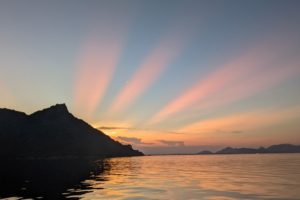When I am in Africa, my life focuses on two things: work and relaxing on the weekends. I have a housekeeper and cook who free me from the drudgery of cleaning, and shopping for food and preparing it. In the USA, in contrast, my attention is much more dispersed. There is my family, (it feels constant) shopping, work, cooking, and cleaning. Today I was thinking about how different my commute to work is as well.
Prior to March 2020, I commuted a couple of times per week between my home on Capitol Hill and the hospital. It started with a four block walk to Union Station where I caught a shuttle bus. Union Station is gorgeous. Opened in 1907, it was designed by Daniel Burnham, one of my favorite Big City beaux arts architects. All Amtrak and commuter trains in the area originate from here, making it a constantly bustling place. The interior is dominated by a tremendous barrel vaulted coffered ceiling. Inside there are wonderful shops. My favorite is Magnolia Bakery. I enjoy walking by and seeing the beautifully decorated cakes and the long line leading to the counter.
Even though I don’t really need to enter the station to get to my shuttle bus, I almost always do. I love to look at the Arrivals and Departures sign, thinking about where people are coming from and going.
The shuttle bus ride from Union Station to the hospital is a lot less enjoyable. Even though the distance between the two is only two miles, the ride can take 30 minutes. Yes, I could walk almost that fast. After work, getting home means another shuttle ride but the treat on its other end is worth crawling at a snail’s pace and inhaling exhaust fumes. When I cut back through Union Station, I always exit its center door. The view of the dome of the US Capitol, only three blocks away, is beautiful. Tourists often stop immediately outside of the doors and gape, snapping photos. I don’t blame them.
My commute in Blantyre contrasts nicely. Going to the hospital I prefer walking, both for exercise and to immerse myself in the neighborhood. Just outside of the house where I stay, I take a left and walk 500 meters on the most potholed street I have ever seen. There is less tarmac than very deep holes. Sometimes a brave soul decides to drive this obstacle course, weaving back and forth trying miss the holes. It is a bit like going out in an African rainstorm with a broken umbrella and trying to stay dry…. amusing and impossible.
It is a bit like going out in an African rainstorm with a broken umbrella and trying to stay dry…. amusing and impossible.
On route to the hospital I cut through the University of Malawi College of Medicine campus. On the right is the Sports Complex in non-pandemic times. There is a family of hamerkops, a large bizarrely shaped bird with a very unusual call, that nests in the grounds of the Sports Complex. I hear or see them several days per week.
Next is a maize field. Maize, which looks like the white corn we eat in the USA but with larger kernels, is the basis of the staple food of the Malawian diet, nsima. The white kernels are dried in the sun and then pounded into flour. This flour is slowly added to rapidly boiling water, stirring constantly. The result is allowed to set and results in nsima, which looks like firm polenta but has less flavor. Though the maize fields are beautiful any time of day, at sunset when I am walking home, they are glorious.
Leaving the maize field I jump across a rivulet, climb a short steep hill, and emerge onto Chipatala Avenue. A left turn and I am almost to work. First, though, I walk by a long row of small wooden stalls selling ridiculously inexpensive, high quality fruits and vegetables. I love to stop and buy bananas, papayas, mangoes, avocados, okra, tomatoes, and eggplant here, bestowing them on my cook to perform her culinary magic.
Entering the back gate of the hospital, the first thing I see (and smell) is the medical waste disposal area. When I first came to Blantyre in 2011, this was a moderate sized building constantly emitting acrid black smoke. Two or three years ago, the brick building fell to the ground. Now, medical waste is thrown on a 3 meter high pile of smoldering ash emitting acrid black smoke. I always hold my breath and walk as quickly as possible to enter the building.
Queen Elizabeth Central Hospital is the largest public hospital in Malawi. Opened in 1958, Elizabeth II visited in 1979. The complex consists of multiple patient care buildings, all of them open wards. These are connected by covered walkways with jalousie windows on each side. Since the hospital provides neither bedding nor food for patients, the courtyards between buildings are filled with relatives doing laundry or sitting in small groups, waiting for visiting hour to see their hospitalized friend or relative, bringing them home cooked food. After 500 meters in the covered walkways (it’s a big hospital) I arrive at the Pediatric Research Ward.
My commutes, whether in Washington DC or Malawi, are both fun and interesting. In DC I enjoy the past, marveling at what talented people have built for everyone to enjoy. In Malawi I enjoy the present, the call of a hamerkop, and sight of a cornfield at sunset, or the smile of the woman selling me a perfect avocado.






